Top 10 Future Car Features |
- Top 10 Future Car Features
- 2015 Mercedes-AMG C63 Priced from $64,825
- McLaren 570S: This is Probably It
- Acura ILX Endurance Race Car Revealed
- 2016 Mazda MX-5 Priced from $25,735
- 2016 Camaro Drops 200 Pounds
| Posted: When Nissan revealed its Resonance concept, it promised rear seat passengers the ability to control music and media. That concept previewed the new Murano and that feature actually made it to the production vehicle. Despite their crazy looks and pie-in-the-sky technologies, ideas that are introduced with concept cars show up on production vehicles from time to time. Here's a list of other features that may seem crazy now, but could realistically show up in your next car. 1. Car-to-Car CommunicationAs more cars get their own Internet connection, they will get the ability to communicate to tell what the flow of traffic is like in a certain location or whether there's ice or snow to watch out for down the road. Car-to-car communication will also help prevent crashes by allowing vehicles to alert one another of an accident before it is visible to the driver. 2. 3D GesturesBased on what was on display at the 2015 Consumer Electronics Show in Las Vegas, 3D gestures will be one way we will interact with vehicles in the future. Instead of touchscreens, joysticks and buttons, we will control parts of our car by waving our hands. That means you can open the window by waving your hand up or down in the direction you want it to move. Or you can answer the phone by pointing at the information screen. We still think it would be funny if you could honk the horn by raising your middle finger. 3. Smartwatch IntegrationSmartphone integration is common in most vehicles, but wearable technology like smartwatches are also starting to get attention. For example, Hyundai's Android Wear app allows for a number of remote features including engine start/stop, door lock/unlock, flashing of the lights and sounding the horn. There app can also help you find your car, call roadside assistance or call Hyundai's Blue Link concierge. What's even cooler is that all those functions can be performed via the voice commands on the smartwatch. 4. Automated Valet ParkingCertain vehicles can pretty much park themselves these days, so the next step is for them to find a spot itself. One key piece of technology that will make this possible is vehicle-to-infrastructure communication. Essentially, a parking garage will talk to the car through a network to tell it where an open spot is available. After dropping off its passengers at the entrance to the parking garage, the car will drive and park itself in that open spot. In order to retrieve the car, the owner just needs to call it up via a smartphone. This technology can also be used at home, where a car can be taught to remember where to park. That means when you arrive home, you can get out of your car on the driveway and let the car park itself in a predetermined location. 5. Better App Integration (Apple CarPlay, Android Auto)Later this year, automakers will ship vehicles with infotainment systems that offer many of the same apps and services through the built-in touchscreen as your cell phone does. This way, you won't have to wait for an update for your car in order to get the latest apps. Furthermore, your phone acts like an Internet hotspot for your vehicle, allowing for connected features. 6. Lightweight MaterialsMaybe it's not a feature, but your next car will probably use lightweight materials. By keeping weight down, your car will be more responsive and efficient. For example, the Ford F-150 has a new aluminum body that helps cut 700 lbs from its curb weight. But aluminum is just the beginning. For example, BMW uses extensive carbon fiber in its i3 electric vehicle, including a carbon fiber passenger cell, something that's close to the carbon fiber monocoques in the most expensive supercars. The next step is for carbon fiber to be put to use in more mainstream products. 7. Full Phone Integration (using phones as keys, etc.)These days it seems easier to lose track of your keys than your cell phone. So why not get rid of your car keys entirely? Automakers are exploring the possibility of using your phone's near-field-communications (NFC) chip unlock your car with a tap, and even allow you to fire up the ignition instead of a traditional key. Car share programs like Daimler's car2go or BMW's DriveNow both use NFC enabled cards. The next logical step is to use the chips in your phone. 8. New DisplaysDigital dashboards and big-screen infotainment systems are becoming a common sight in our cars, but there's no doubt that they could be sexier. One solution is circular LCD panels, which can better mimic the gauge clusters we're used to, but with more customizable information. Another option is organic light-emitting diode or OLED displays. These OLED displays are awesome because they are flexible, transparent, lighter, thinner better quality than LCD displays. Imagine instead of a projected head-up display, if your entire windshield could be a screen. With OLED displays that's possible. 9. Side Collision PreventionNow that many cars are getting front-collision warning systems, rear cross-traffic alerts and even ways to prevent a head-on crash, the next step is to stop the possibility of sideswiping or turning into an object. BMW brought an i3 to the 2015 Consumer Electronics Show outfitted with LiDAR sensors (light-RADAR) that can sense objects around it to determine if there was any risk of colliding or scraping something while you turn. This works well in parking situations where there are barriers, columns or planters where the car will automatically stop the car to prevent a costly mistake. These sensors could also work well on the road where the car can detect other vehicles, pedestrians and bicycles with greater accuracy than just the sensors used for blind spot detection. 10. Biometric (fingerprint) Scanners
But some of the biometric sensors can go beyond that. Ford has been working on incorporating a heart-rate and breath rate monitor for the driver in order to alert them or get the attention of emergency services of any impending medical issues. Loading, please wait... |
| 2015 Mercedes-AMG C63 Priced from $64,825 Posted: Pricing for the 2015 Mercedes-AMG C63 has been announced. Arriving dealerships in the U.S. starting April 2015, the Mercedes-AMG C63 will start from $64,825 including destination while the more powerful C63 S will be priced from $72,825. Powered by a new 4.0-liter bi-turbo V8 engine, the C63 packs 469 hp and 479 lb-ft of torque while the C63 S gets an extra shot of power, making 503 hp and 516 lb-ft of torque. Standard equipment on the range-topping C-Class models includes a Burmester sound system, keyless entry, collisions prevention assist plus, attention assist driver drowsiness monitor, AMG Speedshift seven-speed sport transmission, AMG dynamic select, satellite radio, power/heated/memory seats and more. To make sure that the cars deliver when it comes time to go fast, they come fitted with AMG Dynamic Exhaust, rear limited-slip differential, AMG Adaptive Suspension, AMG three-stage ESP system, 18-inch wheels (C63) or 19-inch wheels (C63 S) and LED headlights. The C63 S also gets dynamic engine mounts, Nappa leather and red brake calipers as standard. SEE ALSO: Mercedes C63 Drops Big Engine, Keeps Rhyming Name According to Mercedes-AMG, the C63 is capable of going 0-60 in four seconds flat while the C63 S does the sprint in 3.9 seconds. The less powerful model has an electronically limited top speed of 155 mph while the C63 S can hit 180 mph. Discuss this story at our Mercedes-Benz forum Loading, please wait... |
| McLaren 570S: This is Probably It Posted: Images of McLaren's latest supercar leaked today ahead of its scheduled debut in New York City tonight. The low-res images, which come from enthusiast forum McLarenlife.com, show off the interior of the car along with front end. The small drawing of the entire car was done by a forum user who saw a full image of the 570S which has since been removed. 2015 New York Auto Show Preview Judging by the sketch, styling on the new car isn't a large departure from the 650S. This car also shares its vitals with its larger sibling, namely a carbon fiber monocoque and a turbocharged 3.8-liter V8 that generates 570 [metric] horsepower or 562 hp. There aren't any other official details about the car yet. This is the first car in the new entry-level Sports Series family, which sits at the bottom of McLaren's three-tier product line. Above it are the Super Series and the Ultimate Series. Discuss this story at our McLaren Forum [Source: McLarenlife] Loading, please wait... |
| Acura ILX Endurance Race Car Revealed Posted: Acura is taking the ILX racing. The new ILX Endurance Race Car was designed specifically to win at the 25 Hours of Thunder Hill, where it will run against cars from Porsche, BMW and more. The car will compete in the NASA Endurance Series. SEE ALSO: 2016 Acura NSX to Offer Customization Program While the exterior bodywork was kept looking stock, the innards of this car are anything but. The engine gets unique mounts, a lightened flywheel and racing clutch, forged pistons and connecting rods, racing cams, low restriction intake and exhaust and blueprinted fuel injectors. Everything else a race car needs, like a full roll cage, race seats, upgraded suspension and tires, a fuel cell and more are all present on this ILX racer. Acura also announced that the new NSX will be the official pace car for the 2015 Pikes Peak International Hill Climb. The ILX Endurance Race Car will debut at the 2015 New York Auto Show. Discuss this story at our Acura ILX Forum Loading, please wait... |
| 2016 Mazda MX-5 Priced from $25,735 Posted: The new 2016 Mazda MX-5 Miata Sport will carry a base price tag of $25,735 including destination charges. The pricing for the new car was announced on Live With Kelly And Michael as part of auto show week. No further details on pricing were divulged. For that money, you will get a base MX-5, which comes with a 2.0-liter four-cylinder engine that makes 155 hp and 148 lb-ft of torque mated to a six-speed manual transmission. Curb weight for the new car was announced at 2,332 lbs for the manual-equipped MX-5. Standard equipment on the car includes a six-speed manual transmission, LED headlights, USB audio input, Bluetooth phone and audio streaming, a leather-wrapped shift knob and power door locks. Three trim levels will be offered with the new car: Sport, Club and Grand Touring. Sport acts as the base model while the Club will be outfitted with performance equipment to improve the car's race track times. Finally, the MX-5 Grand Touring sits atop the range, packing a long list of amenities to make this the most comfortable version of the car. SEE ALSO: Mazda Teases "Aggressive" MX-5 Miata Club Edition For comparison, the 2015 Scion FR-S carries a base price tag of $25,670. Mazda will show off the most hardcore version of the 2016 MX-5, the Club Edition, at this week's New York Auto Show. Watch for more details here as AutoGuide covers the show live. Editor's Note: A previous version of this story reported a base price of $24,950. Discuss this story at our Mazda MX-5 Miata forum Loading, please wait... |
| Posted: Chevy's new Camaro has been put on a diet. By using aluminum and other lightweight materials, Chevrolet says it has shaved at least 200 lbs off the curb weight of the new Camaro. "We kept the cornering confidence and control that make the Gen 5 Camaro 1LE so fun to drive, and added a greater sense of agility," said Al Oppenheiser, Camaro chief engineer. "The new Camaro brakes harder, flicks into corners more quickly, and drives out of the corner faster. We expect it will set the benchmark in the segment and give many sports cars a challenge."
SEE ALSO: New 2016 Camaro Details Released Chevy specifically points out that nine pounds were shaved thanks to a new aluminum beam (pictured right) that is used to support the instrument panel, while new suspension components made from aluminum and a rigid composite material make the entire suspension assembly 21 percent lighter than the current car. The 2016 Camaro now sits on a new platform, another factor that helped the car lose weight. The unveiling of the new Camaro will take place on May.16 at Detroit's Belle Isle. Discuss this story at our 6th Generation Camaro Forum Loading, please wait... |
| You are subscribed to email updates from AutoGuide.com News To stop receiving these emails, you may unsubscribe now. | Email delivery powered by Google |
| Google Inc., 1600 Amphitheatre Parkway, Mountain View, CA 94043, United States | |
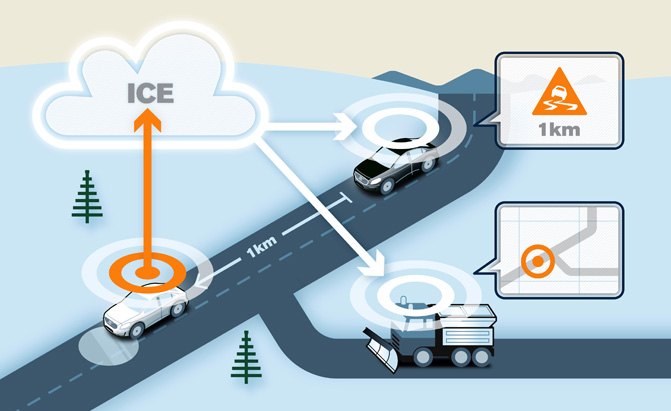
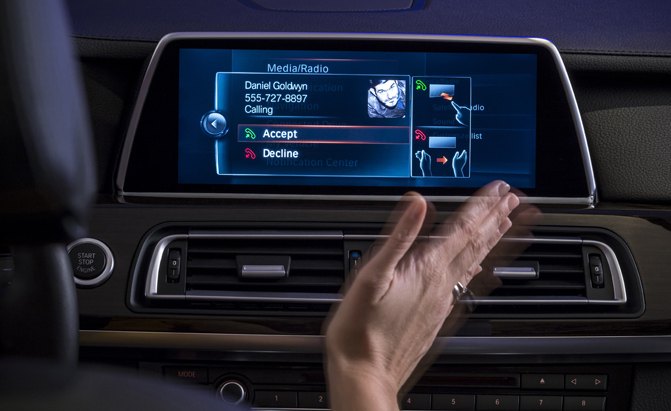
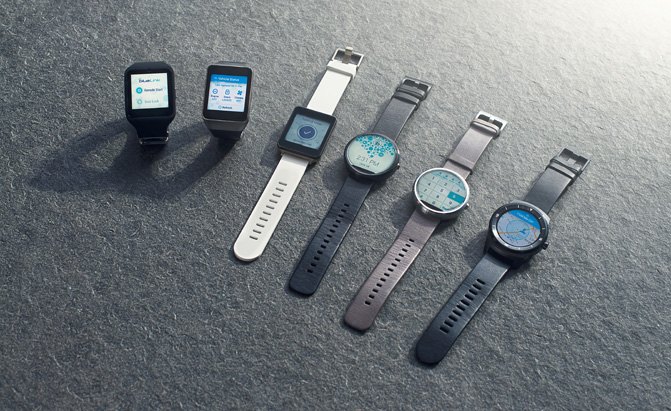
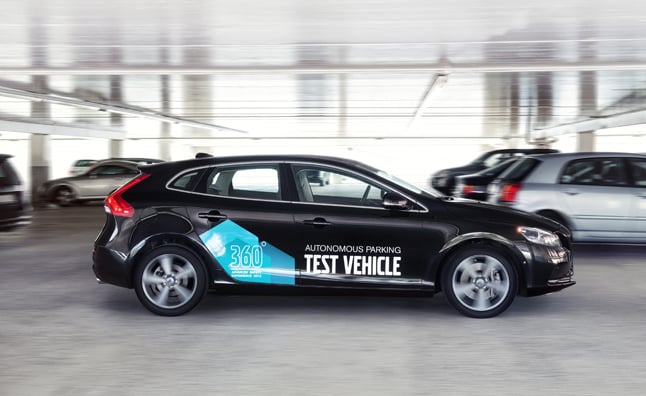
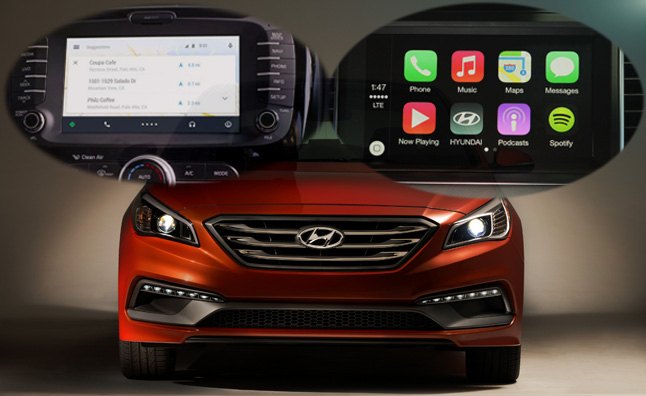
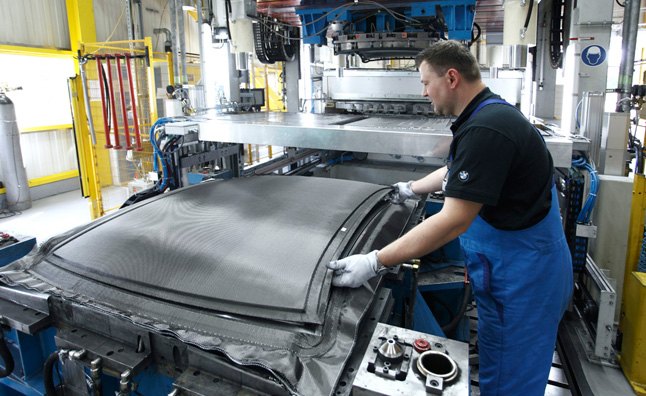
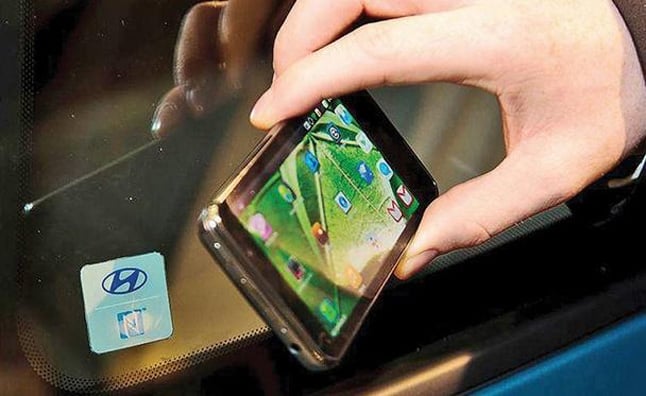
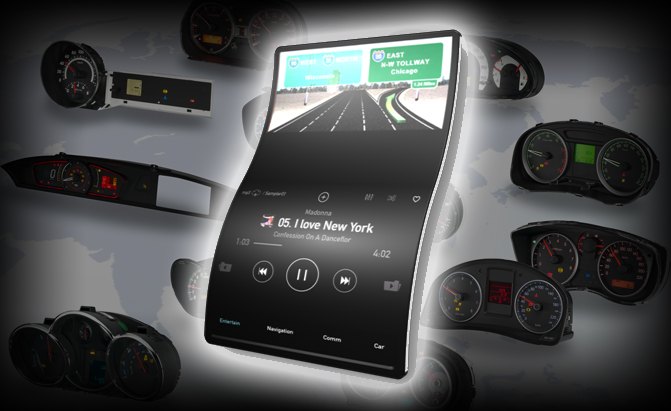
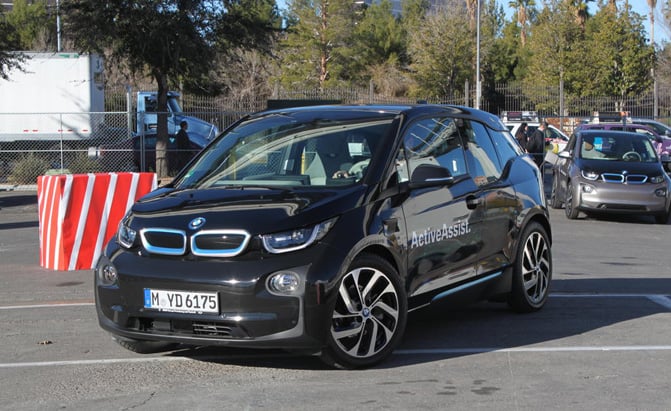
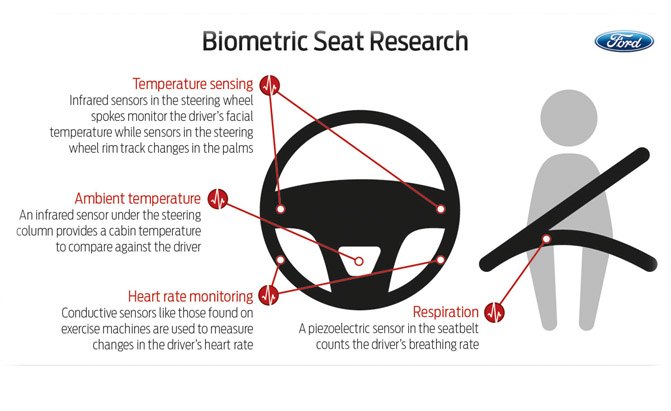
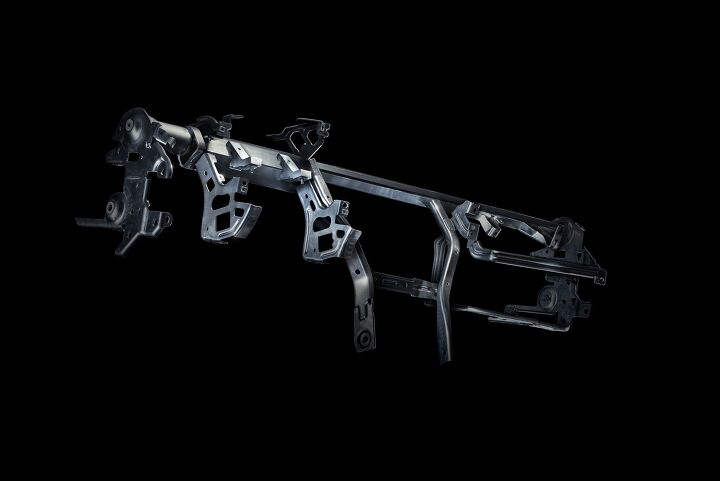
No comments:
Post a Comment